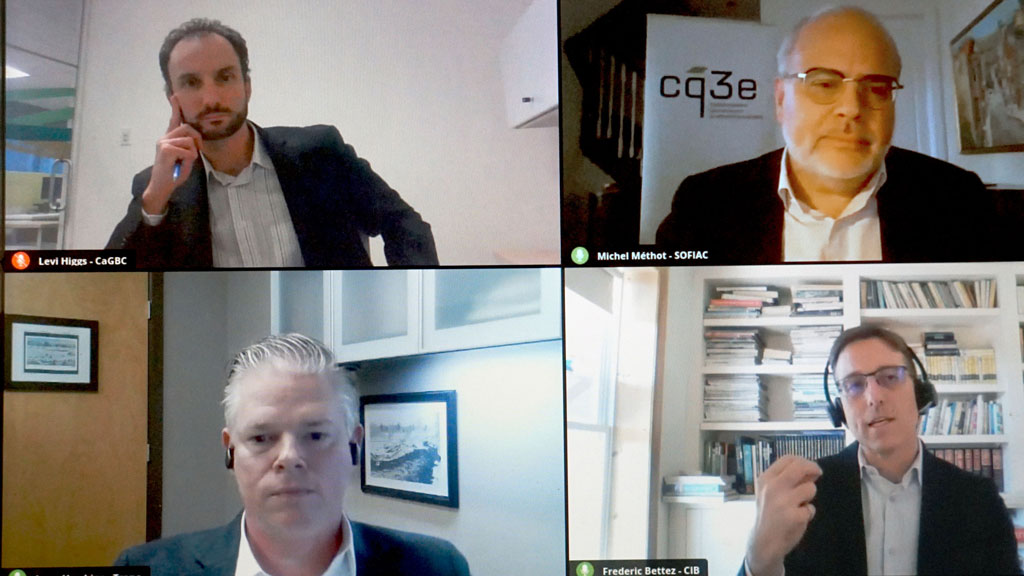New Canadian financing tools and programs will spur comprehensive energy retrofits of aging commercial buildings, a construction sector that could boom over the next few years.
While the energy performance contracting market has held at $400 to $500 million annually for years, that number could and should double or even triple in five years if Canada is to meet its decarbonization targets, states Michel Methot, general manager of SOFIAC, a newly formed Quebec-based investment fund agency.
The largest energy efficiency financing agency in Canada, SOFIAC is an initiative of Quebec pension plan Fondaction and Econoler, with the support of the province’s Ministry of Energy and Natural Resources.
It receives a large lending package through the Canada Infrastructure Bank (CIB) and Fiera Private Debt.
SOFIAC has put together $150 million for investment over the next five years towards energy retrofits primarily for commercial, industrial and multi-residential building owners with annual energy expenditure bills of more than $1 million, said Methot.
A panellist at a webinar on retrofits done through aggregation at the Canada Green Building Council’s (CaGBC) recent Building Lasting Change conference, he said SOFIAC finances “deep retrofits” with 12- to 15-year paybacks. Loans are market rate and the agency funds 100 per cent of the energy installation.
He said qualifying projects target 30 to 100 per cent abatement of greenhouse gas. The objective is to see an annual reduction of 20,000 tonnes of GHG gases.
While the Quebec agency was officially launched in October, Methot said it has developed a portfolio of 23 projects since its inception about a year ago.
Among the CIB initiatives announced last year is a $2 billion investment in large commercial building retrofits to reduce greenhouse gas emissions. Financing is primarily for energy efficiency projects but also goes to fuel switching, onsite renewable energy and generation storage, said Fred Bettez, managing director of investments with the CIB.
The CIB’s objective is “to lead the way” for private financiers to “transform a market” that is normally difficult to finance through the private sector, Bettez told the CaGBC webinar.
The CIB aims to promote energy retrofit investments for equity and others in the future, he said, noting low rate, long-term (three to five years), high-leverage loans are available. The CIB will finance up to 80 per cent of the eligible cost of the project.
Some of the risks to building owners are transferred to the project engineers, contractors as well as equity and debt investors, Bettez said. The CIB is also flexible on off-balance sheet or corporate balance sheet project financing.
The CIB managing director pointed out the CIB has migrated to an aggregator financial model because of the fragmented and often small nature of the retrofit project market. The CIB will invest a minimum of $25 million but outsource to firms with project design, construction, management and maintenance expertise.
Webinar panellist Leon Hawkins, energy solutions lead with Trane Technologies, said the company is making investments in new refrigerants and other energy initiatives including the expansion of its energy graduate training program.
It helps owners upgrade old infrastructure usually without requiring upfront capital, he said.
Through an aggregation model such as SOFIAC, Trane sees a means to practically reduce energy project development costs.
“That’s always been a barrier for energy service companies in the past.”
Hawkins sees “great opportunities” today for GHG retrofits using aggregators. The financial lending support of the CIB and others as well as working energy service companies like Trane can help cover a comprehensive energy project, not just a small retrofit.
He said before financing tools from the CIB and others were available in 2015, one of its customers — the owner of an aging 30-storey office tower in downtown Vancouver — embarked on several retrofits to eliminate GHG emissions.
Today, the 1960s tower doesn’t use any greenhouse gases except on the city’s coldest winter days.
“It really showcases this facility as a modern, energy efficient operation.”
“Trane is continuing to look for avenues for even higher savings,” he said, adding it is possible because the financial tools now available make such projects practical for owners.











Recent Comments